How To Keep A Drawer From Sliding Open
As promised, today I'm sharing how to install drawer slides on a vintage dresser. This is a great way to give an old dresser new life, especially if you plan on using it a lot and have been frustrated with sticky or sagging drawers.
To see this finished dresser and stain details go HERE.
Back a few years ago when I used to refinish dressers and sell them, the most common complaint I used to hear from people regarding old, antique, or vintage dressers were the drawers. Because most of them had wood drawer slides, over time and with different environments, the wood would wear down. This caused them to not slide smoothly, stick, sag when you pulled them out all the way, and were overall a pain if you used them a lot. Most people who fell in love with an older piece accepted this as the 'character' of older dressers. I tend to agree. But for those who love the look of vintage dressers but love the functionality of new dressers, this tutorial will help you achieve that!
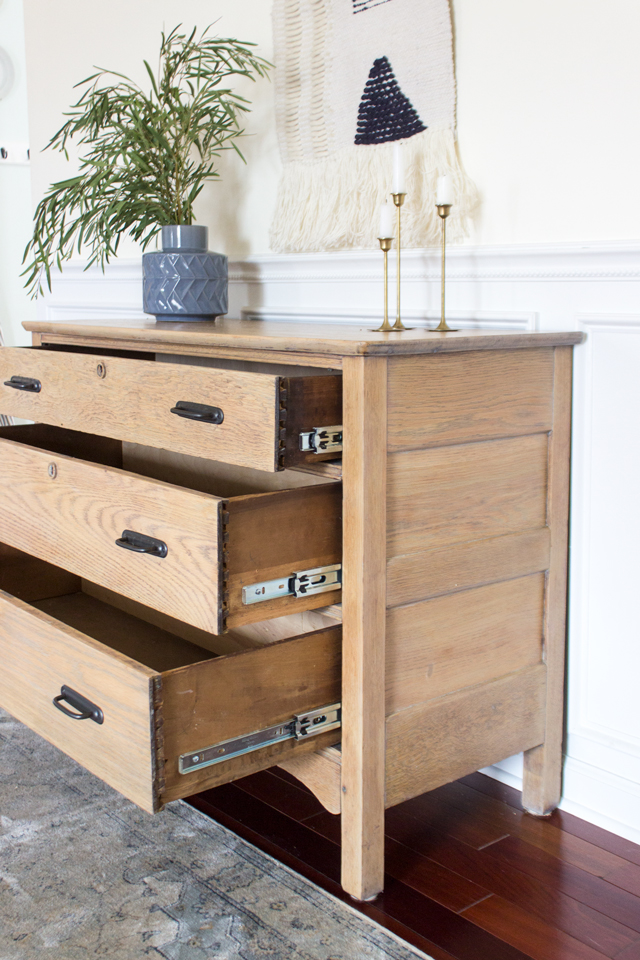
In my opinion the best type of drawer slide to install and use is metal ball-bearing drawer slides. They are more durable and easier to install, making their higher price point well-worth it.
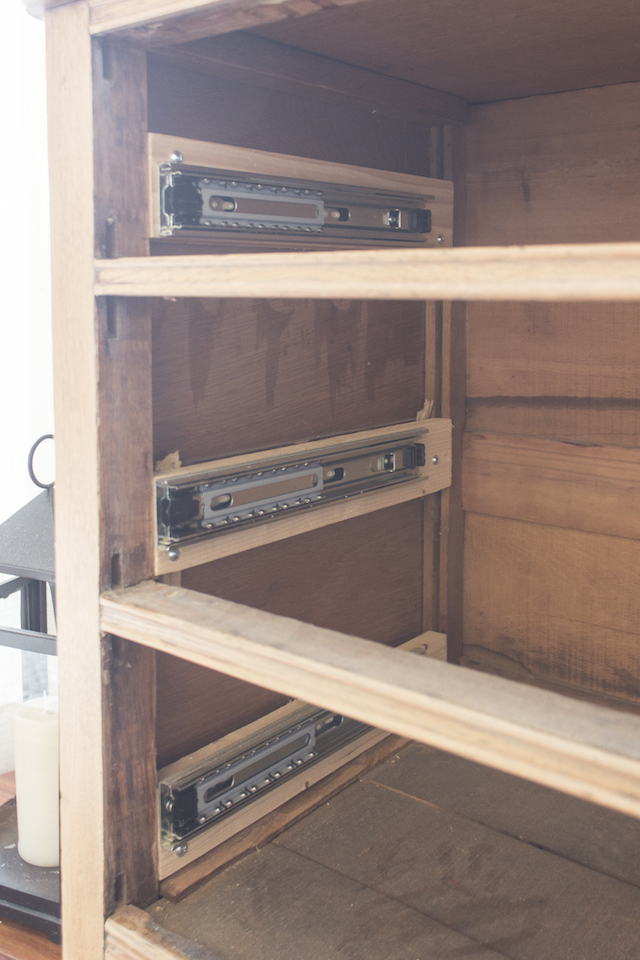
As you may remember from my previous post, this was the dresser as she started out:
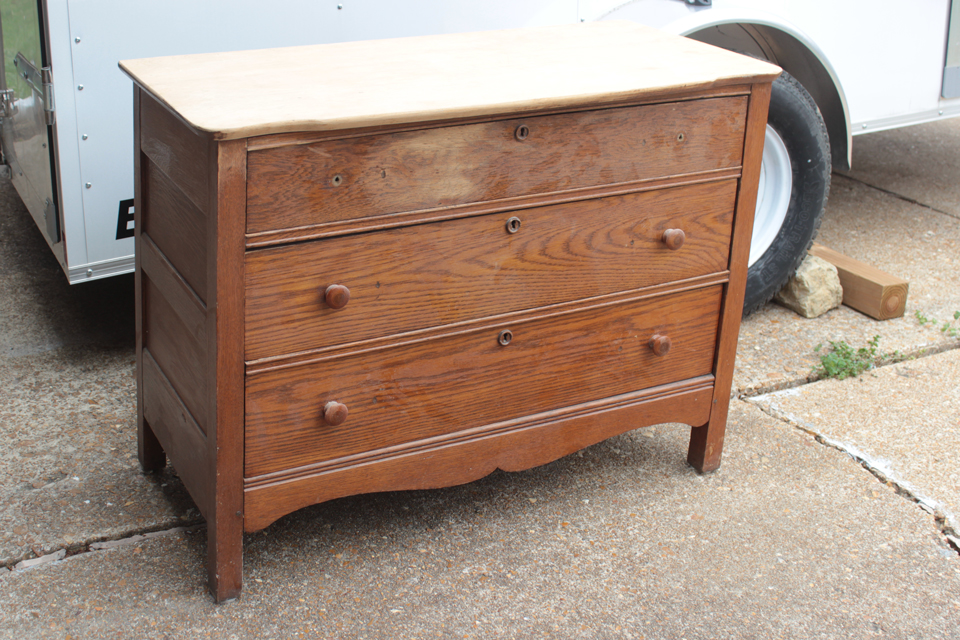
Tools You Will Need:
Chisel
Mallet
Circular saw
Measuring tape
Pocket hole jig
Hammer (or cordless brad nailer)
Cordless drill
Level
1/16″ Drill bit
Wood clamps
Supplies You Will Need:
-1/2″ plywood (I used a 1/4 sheet for all 3 drawers that is 2′ x 4′)
1″ pocket hole screws (8 for each drawer)
1″ nails
2×4 scrap to cut wood shims
-Ball-bearing metal drawer slides (buy the length as the depth of the drawers– 12″ long ones are found at WoodCraft and Amazon)
-1×3 boards cut to drawer depth (I used about 6′ on this dresser)
-1″ wood screws (for attaching to drawer face)
-1 1/2″ wood screws (for attaching 1x3s to side of dresser)
Step 1: Remove Old Drawer Slides
Using a chisel and mallet remove the old wooden drawer slides from the inside of the dresser.
Click thumbnail below to see larger picture collage
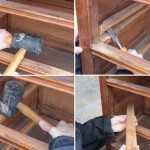
Or see animated GIF below:
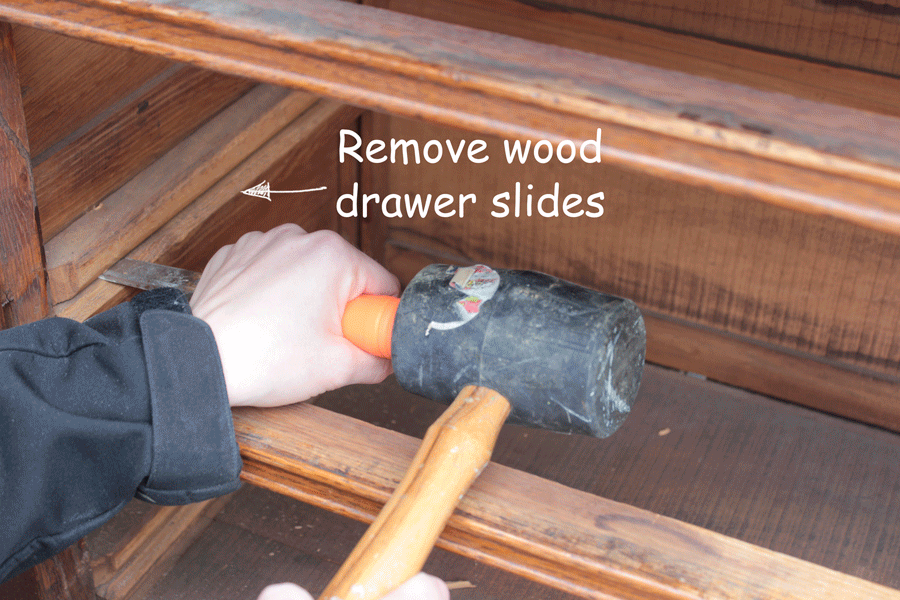
Step 2: Dismantle Old Drawers
Slide out the drawer bottom (may have to remove nails with a hammer) and if it's in good shape, save it to reuse. Use a circular saw to cut off the sides from the drawer face. Pry apart the sides from the back. Cut off tenons from drawer sides and discard the drawer back.
Click thumbnail below to see larger picture collage
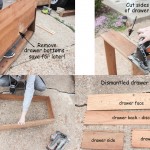
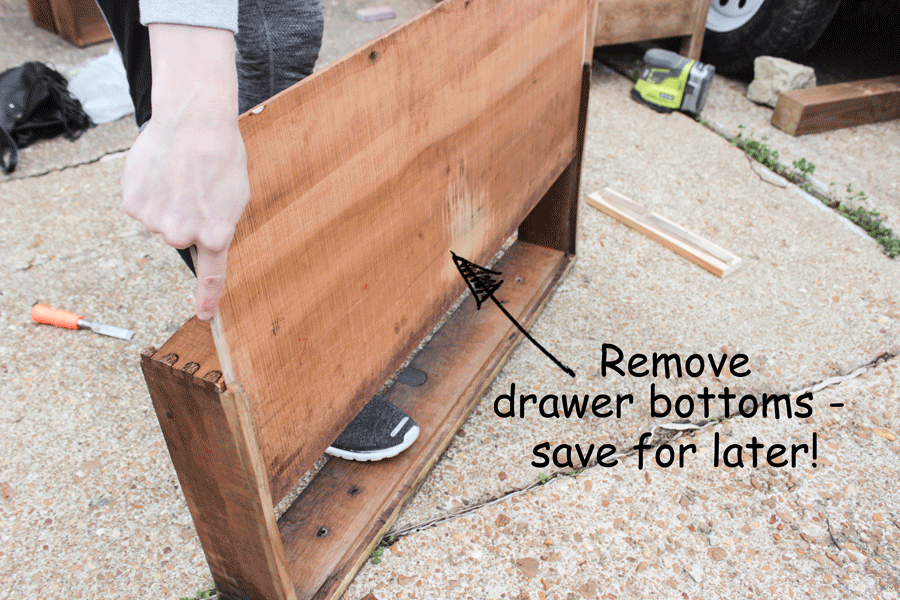
Step 3: Re-build Drawers
Measure the length of the drawer face and the height of the drawer sides from the routed groove. Cut the 1/2″ plywood to that same height and 2″ less than the length of the drawer face. The reason why you want the length different is because the metal drawer slides require 1/2″ clearance on either side of the drawer carcass. You also will be attaching the new 1/2″ plywood between the two drawer sides (which are 1/2″ thick), so you have to subtract their thickness as well from the total length of the plywood front and back (hence 2″). Drill 2- 1/2″ pocket holes on either end of the plywood pieces and attach them to the drawer sides using 1″ pocket hole screws. Pre-drill and screw into place the new plywood drawer front into the back of the drawer face. Slide the drawer bottom back into place (into the routed grooves on the side pieces) and nail into the front and back using 1″ nails.
Click thumbnail below to see larger picture collage
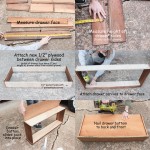
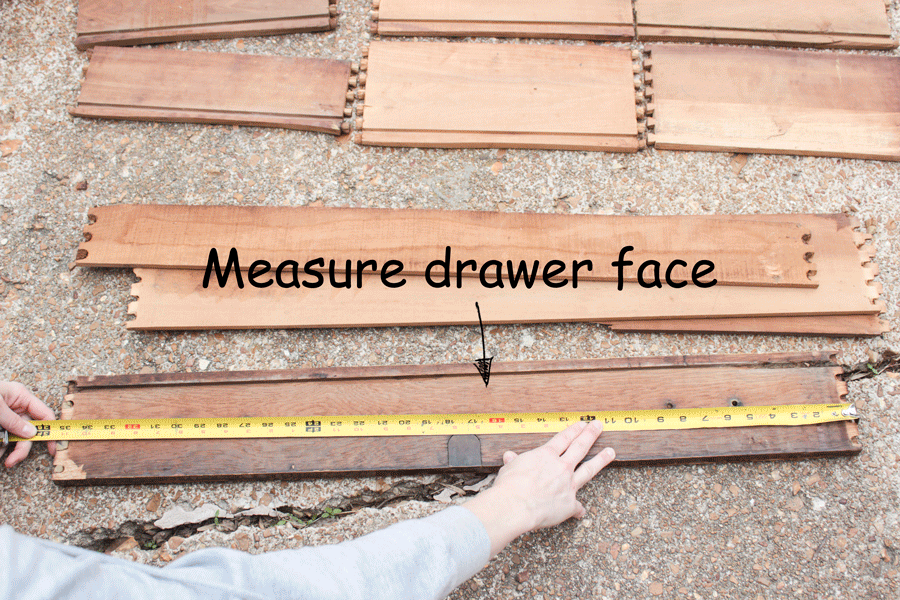
Step 4: Attach Drawer Slide Spacers
Using a clamp and a level, position the 1×3 boards on the inside sides of the dresser for each drawer opening. Attach them using 1 1/2″ wood screws into (pre-drilled holes– important to always pre-drill holes into old wood so it doesn't split).
You may need to use some wood shims (from scrap 2×4) to get the board to be the right thickness. The clearance on each side of the drawer can only be 1/2″ for the metal drawer slides to fit and work properly. So, you need the wood on each side to be the right thickness so the attached metal slide sticks out far enough. The 1×3 is 3/4″ thick so wood shims can add an additional 1/16″ or 1/8″ or 1/4″ thickness depending on what you need. I attached the 1x3s first, installed the metal glides on the drawer and inside and then measured to see how thick I needed my wood shims to be (I used 1/8″) on each side and added accordingly.
Click thumbnail below to see larger picture collage
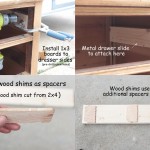
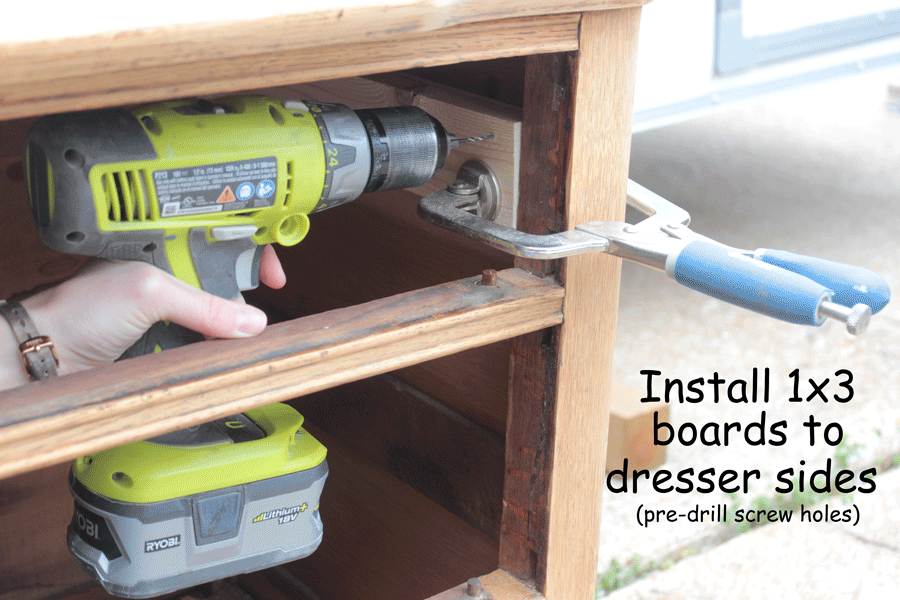
Step 5: Install Drawer Slides
Measure and mark level the position of the slide that goes on the inside of the dresser. Attach with the provided screws. Slide into place the part of the slide that goes on the actual drawer. Mark the height and depth of that part of the slide from the opening and make corresponding marks on the outside of each drawer side. Attach the part of the slide that goes on the drawer and test fit it into the drawer opening. It is normal to have to make some adjustments. The slides need to be level and straight (on both the outside of the drawer and the inside of the dresser and they both have to be positioned the same depth on both sides in order for the drawers to slide in and out smoothly.
Click thumbnail below to see larger picture collage
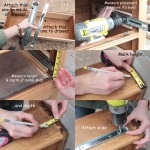
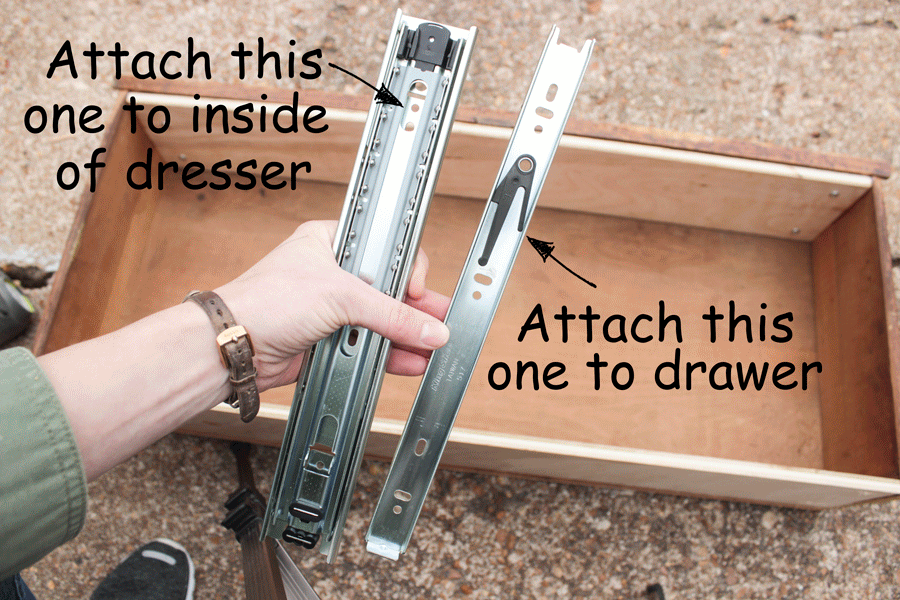
If you would like to know how to strip wood finishes, you can check out
my tutorial on how to refinish a wood dining table here!
To see this completed dresser along with the products and method I used to stain it, go to
my post on this vintage dresser with a modern makeover!
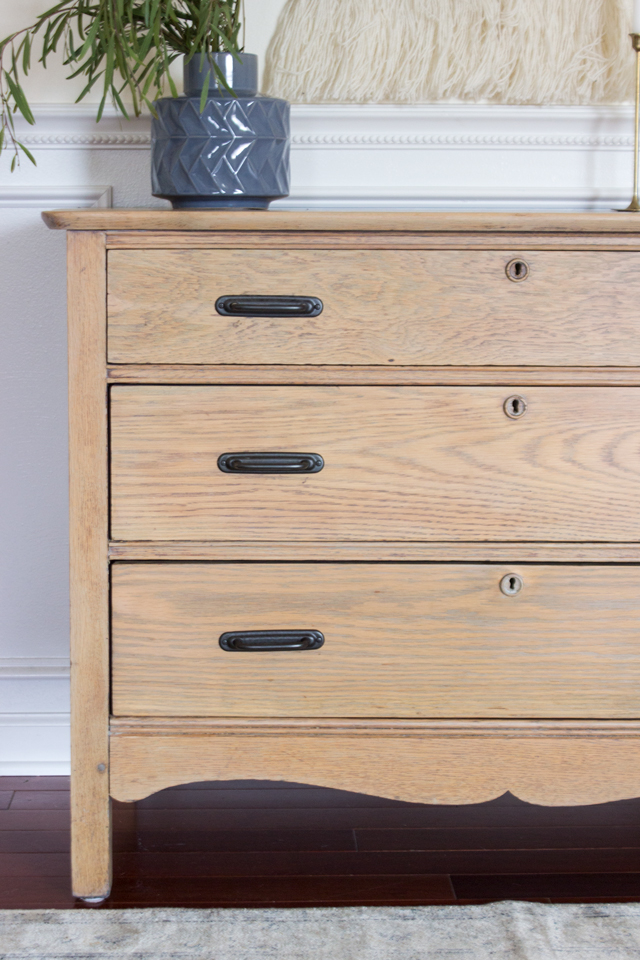
If you liked this tutorial, be sure to share it!
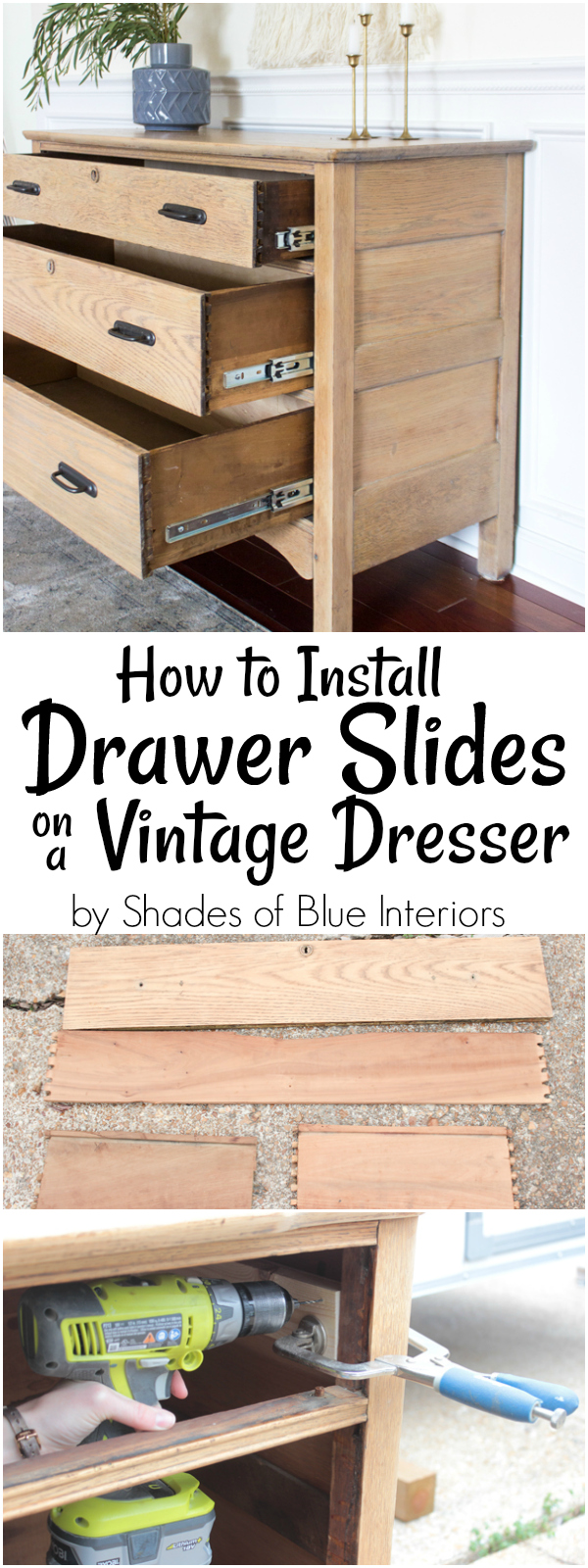
How To Keep A Drawer From Sliding Open
Source: https://www.shadesofblueinteriors.com/how-to-install-drawer-slides-on-a-vintage-dresser/
Posted by: blancharddeve1941.blogspot.com

0 Response to "How To Keep A Drawer From Sliding Open"
Post a Comment